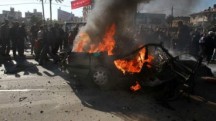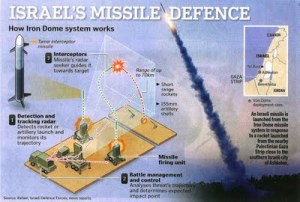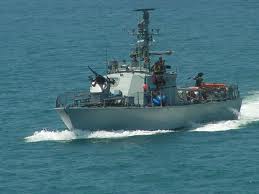 Drones are the must-have of the century for the modern military. As unmanned system they can fly a long time without a pilot who gets tired, they do not put pilots at risk and –very important in times of budget cuts – they are low-cost. What makes them so popular is that they fit in what is called asymmetric warfare, warfare of big states against small groups of militants. This the dominant warfare today. And there is one country with long experience with it: Israel.
Drones are the must-have of the century for the modern military. As unmanned system they can fly a long time without a pilot who gets tired, they do not put pilots at risk and –very important in times of budget cuts – they are low-cost. What makes them so popular is that they fit in what is called asymmetric warfare, warfare of big states against small groups of militants. This the dominant warfare today. And there is one country with long experience with it: Israel.
Therefore it is no wonder that Israel is a major developer of drones, only second to the US. UAVs (Unmanned Aerial Vehicles) are a key export of Israel’s arms industry, most prominently Aeronautics Defense Systems, Elbit Systems and Israel Aerospace Industries. UAVs are used for intelligence, surveillance and reconnaissance (ISR) and targeting missions. A growing number of models have begun carrying missiles. Israeli drones are used and improved with battlefield experience since 1982.
The use of drones in the 2009 Gaza war is well documented in the Human Rights Watch Report Precisely Wrong
European countries are very eager to profit from Israeli technology. Joint-ventures between have advantages for both parties: for Israeli firms they provide access to EU markets (revenues), for European companies they enable technology transfers. That Israeli military know-how is gained at a high cost in terms of peace and human rights seems no objection for Europe.
The UK is developing several surveillance drones, most notably the Watchkeeper, jointly produced by Elbit and Thales UK. The first ten are built in Israel after which production is transferred to the UK. Although Watchkeeper was expected to enter service in 2010 it is repeatedly delayed further into 2012. the Watchkeeper is a surveillance drone but may be armed in the future. The UK is already using the US-made armed Reaper drone in Afghanistan.
The UK also has Israeli Hermes 450 surveillance drones in production for use in Afghanistan. Production takes place in Leicester with U-TacS, a company jointly owned by Elbit systems and Thales UK.
Germany ordered a small fleet of Israel Aerospace Industries (IAI) Heron 1 spy drones for use in Afghanistan. German soldiers received practical training for the Heron 1 in Israel. Heron is also used by Canadian, French, Australian and Spanish forces in Afghanistan. Israelis are barred by Afghanistan, so IAI ceded maintenance services to its German partner Rheinmetall Defense.
The deaths of a German citizen in Waziristan by an American drone strike in 2010 confronted Germany painfully with the consequenses of drone warfare. Targeted assassinations have been developed as a tactic by Israel. The first high-profile use of drones in killing was the assassination of Hizballah Sheikh Abbas al-Musawi in 1992 when an IAI Scout was used to identify the target and lead the attack.
France bought the IAI Hunter in 1997 and the Heron 1 based Harfang in 2001, the latter developed by European defence company EADS and IAI. The French state and EADS invested 380 million euro for the French heron-version but already the system is outdated and needs replacement. This replacement is the topic of fierce debate between the French government and members of the Senat, maily focussing on the price and capabilities of different systems. Competition is between those that want to buy American Reaper drones and those that want to support the development of a European drones industry by buying adapted Heron TP drones built by Dassault and IAI. EADS appears to be losing out because of failing cooperation between EADS and IAI.
In a letter to newspaper Le Monde four French senators claim that not only is the American drone less expensive but also that one of the disadvantages of the Heron is that it cannot be armed. This is however contradicted by many sources. . Precision weapons that could be adapted for armed drones include the Lahat missile, designed by IAI subsidiary MBT, and Rafael’s Spike, which is produced in Europe by EuroSpike, a joint venture of German Diehl, and Rheinmetall with Rafael.
Fortunately, financial and military questions are not the only issues in the French UAV debate. The French BDS movement has raised the ethical question of buying Israeli weapons and has started an online petition.
Photo: Two men were killed by targeted drone attack in Gaza City 08/11/2011







